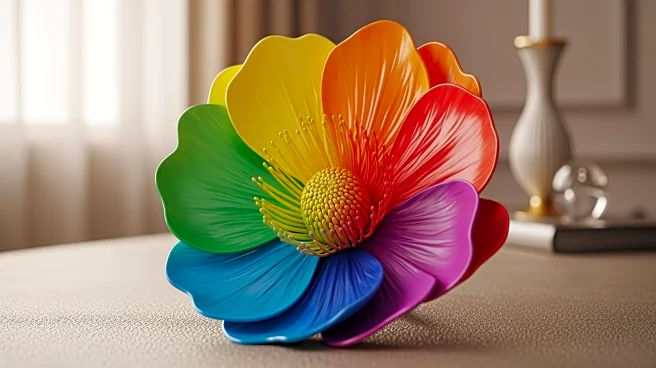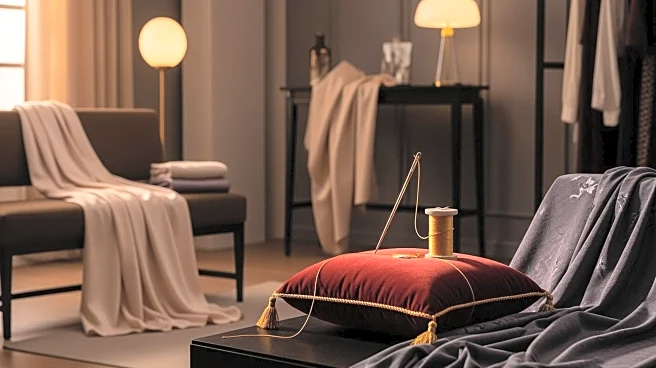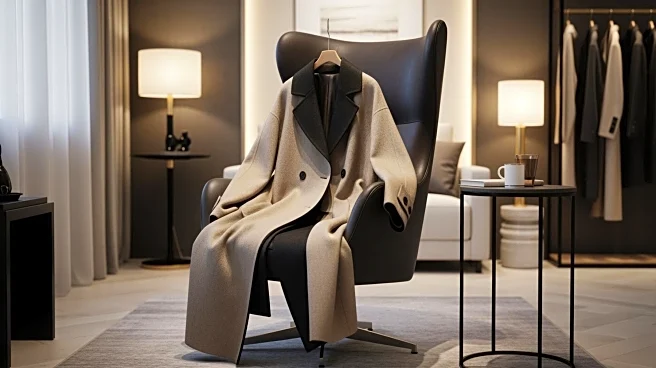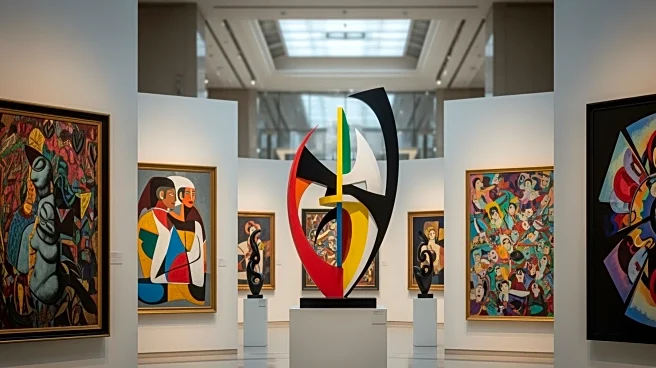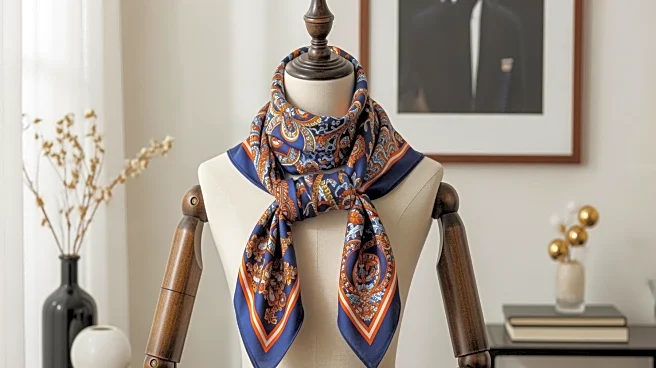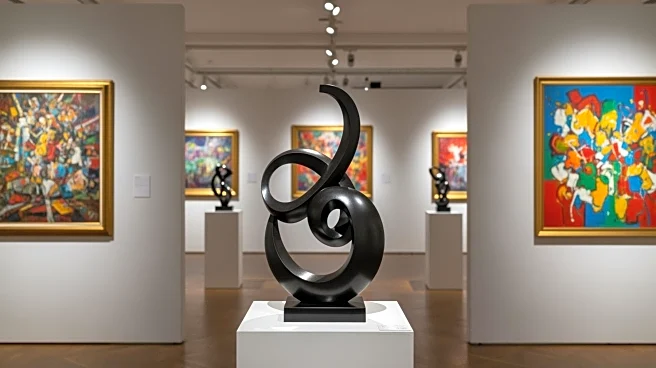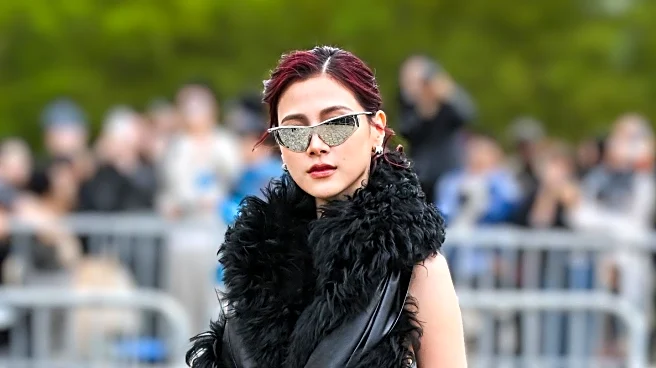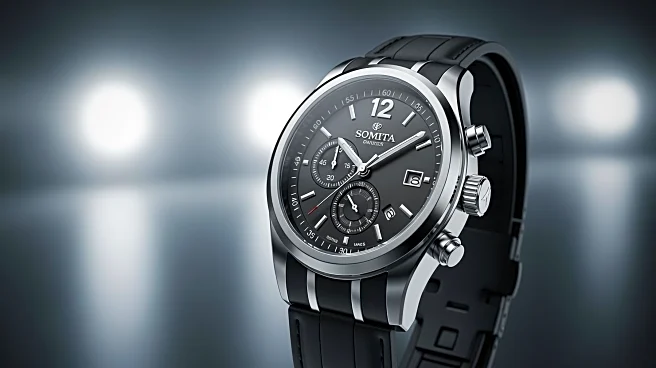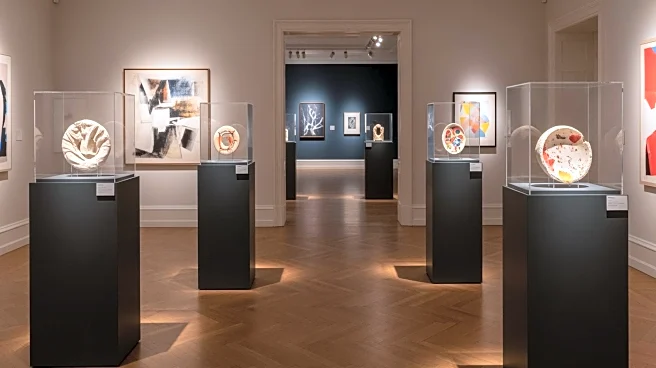What's Happening?
Takashi Murakami, the renowned Japanese artist, has once again partnered with the luxury fashion house Louis Vuitton to design a new series of Artycapucines bags. This collaboration marks over two decades
of partnership between Murakami and Louis Vuitton, beginning in 2003. The latest collection features 11 unique bags that incorporate Murakami's signature motifs, including a silver canvas bag adorned with 100 resin mushrooms and several bags featuring his iconic smiling flower design. The collection is showcased alongside a whimsical installation at the Grand Palais during Art Basel Paris, featuring a large tentacled creature and other vibrant elements characteristic of Murakami's style.
Why It's Important?
This collaboration highlights the ongoing fusion of art and fashion, a trend that has been gaining momentum over the years. By partnering with a high-profile artist like Murakami, Louis Vuitton continues to position itself at the intersection of these two creative industries, appealing to both art collectors and fashion enthusiasts. The collection not only reinforces Murakami's influence in the art world but also enhances Louis Vuitton's brand image as a purveyor of artistic luxury. This partnership could potentially drive sales and increase brand visibility, benefiting both the artist and the fashion house.
What's Next?
The new Artycapucines collection is expected to attract significant attention from both the art and fashion communities. As the bags become available, they are likely to be sought after by collectors and fashionistas alike, potentially leading to high demand and limited availability. Louis Vuitton may continue to explore similar collaborations with other artists, further blurring the lines between art and fashion. Additionally, the success of this collection could inspire other luxury brands to pursue similar partnerships, further integrating art into the fashion industry.
Beyond the Headlines
The collaboration between Murakami and Louis Vuitton also raises questions about the commercialization of art and the role of artists in the fashion industry. While such partnerships can elevate an artist's profile and provide financial benefits, they also challenge traditional notions of art as a purely aesthetic pursuit. This trend reflects a broader cultural shift towards the commodification of art, where artistic creations are increasingly seen as marketable products. As the boundaries between art and commerce continue to blur, the implications for the art world and its values remain a topic of debate.
